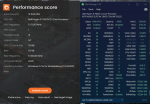Soon to be released EXPO AMD optimized DDR5 memory.
Likely as with Intel memory, A-die will be preferred. M-die is a close second.
It has been said that like 3800-4000 1-1 the sweet spot for AMD 5000 series CPUs, 6000 1-1 should be the sweet spot for AMD 7000 series CPUs.
Basic DDR5 Timing Rules
tRAS=tRCD+tRTP
tRC=tRAS+tRP
65528 is the correct tREFIab max.
WRRD = WRWR DD
RDRD DD = WTRS.
tFAW = 4x tRRDS
tRFC: Steps of 32 352,384,416,448,480,512,544,576 ^ only matters for REFIab - if 65528 is used.








